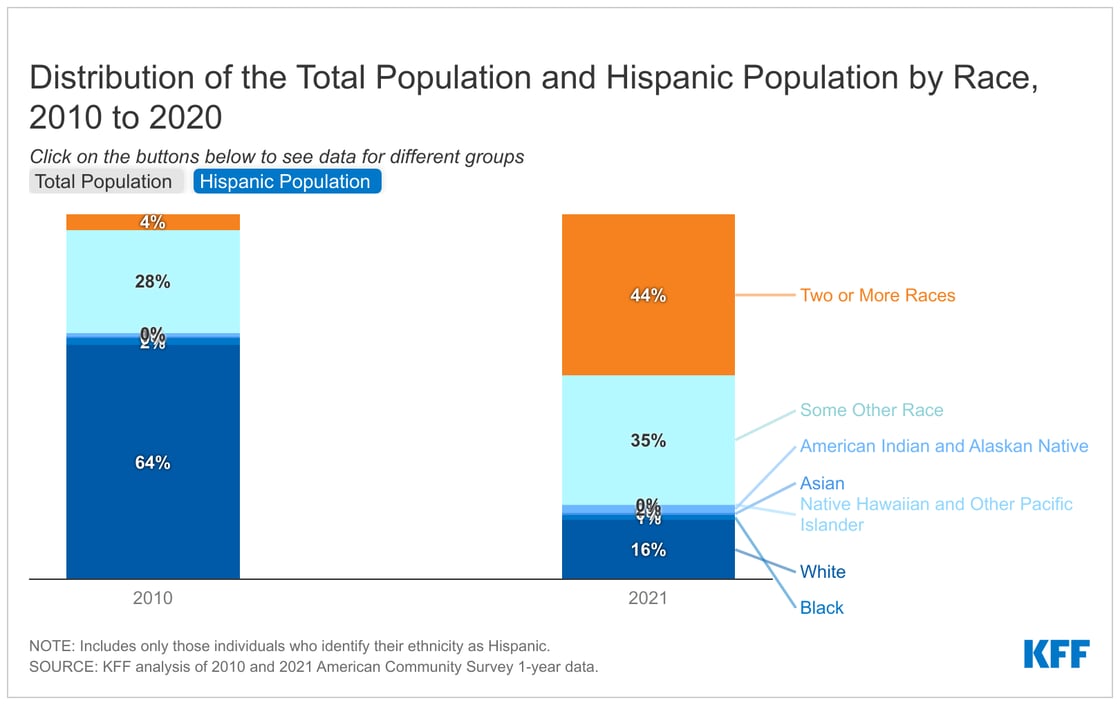|
The KFF look at U.S.
Census data reporting by race and ethnicity comes as the Biden
Administration issued proposals for the first potential changes to
minimum standards for race and ethnicity data used in federal reporting
in 25 years.
The analysis finds that
the share of the U.S. population identifying as some other race grew
from 5% to 7% and the share reporting two or more races increased from
3% to 13% from 2010 to 2021.
As discussed in Proposed Changes to Federal Standards for Collecting and
Reporting Race/Ethnicity Data: What Are They and Why do they Matter?,
these trends highlight the importance of approaches to collecting and
reporting data on race and ethnicity for understanding the diversity of
the population and identifying health and health care disparities.
Among other changes, the proposals would provide a new separate racial
category for people who identify as Middle Eastern or North African and
shift to collect race and ethnicity through a combined single question
instead of asking about Hispanic or Latino ethnicity in a separate
question from race.
While a final decision on changes isn’t expected until 2024, the
proposal is open for public comment until April. Any changes to the
collection of data on race and ethnicity would impact understanding of
disparities in health and health care and could influence policy
efforts.
|
.png?width=1200&upscale=true&name=Just%20Released%20Header_1%20(1).png)

No comments:
Post a Comment